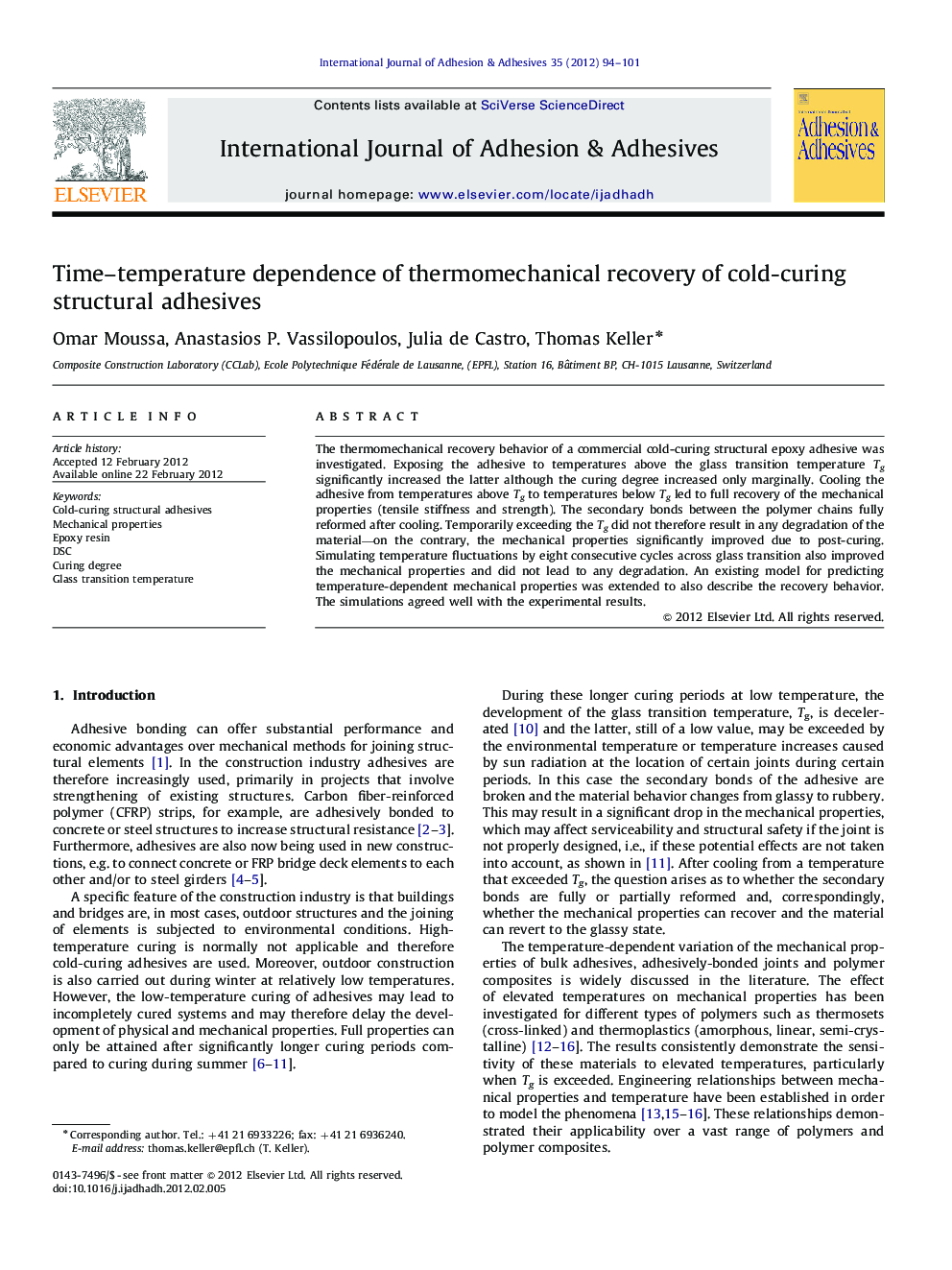| Article ID | Journal | Published Year | Pages | File Type |
|---|---|---|---|---|
| 776338 | International Journal of Adhesion and Adhesives | 2012 | 8 Pages |
The thermomechanical recovery behavior of a commercial cold-curing structural epoxy adhesive was investigated. Exposing the adhesive to temperatures above the glass transition temperature Tg significantly increased the latter although the curing degree increased only marginally. Cooling the adhesive from temperatures above Tg to temperatures below Tg led to full recovery of the mechanical properties (tensile stiffness and strength). The secondary bonds between the polymer chains fully reformed after cooling. Temporarily exceeding the Tg did not therefore result in any degradation of the material—on the contrary, the mechanical properties significantly improved due to post-curing. Simulating temperature fluctuations by eight consecutive cycles across glass transition also improved the mechanical properties and did not lead to any degradation. An existing model for predicting temperature-dependent mechanical properties was extended to also describe the recovery behavior. The simulations agreed well with the experimental results.
